For the first time in two and a half years, a total lunar eclipse will be visible in California and west of the Rocky Mountains.
Early Wednesday morning, May 26, the moon will pass into the Earth's shadow.
The partial eclipse is when the moon enters what’s called the penumbra.
Get Southern California news, weather forecasts and entertainment stories to your inbox. Sign up for NBC LA newsletters.
But the total eclipse occurs when the moon enters the umbra. This is the point the moon turns a blood red.
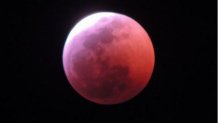
The reason it's a reddish color is the sunlight is refracting through our atmosphere and leaking through the edges of our planet on to the moon. If you are on the surface of the moon looking at Earth, you are seeing every sunrise and sunset at the same time.
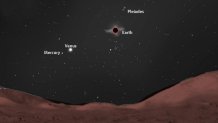
This is also a super moon. Which means it is within 90% of its closest possible distance to Earth. On the 26th the moon will be 222,116 miles away from the Earth compared to 252,595 miles away in December of 2021. The moon appears 7% larger and 15% brighter than the December full moon.
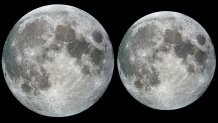
Penumbral shading becomes deeper as the moon moves toward the first partial phase, which begins when the moon's leading edge enters Earth's umbra. The umbra is the innermost and darkest part of a shadow, where the light from the sun is completely blocked by the Earth. When the moon is within Earth's umbral cone, no direct sunlight falls on its surface. Totality starts when the trailing edge of the moon enters the umbra.
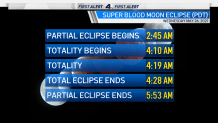
If you want to see this sight you'll have to get up extra early Wednesday morning. Here are the times. Totality lasts 18 minutes. Griffith Observatory in Los Angeles will also host a live online broadcast on its YouTube channel on May 26 from 1:45 a.m. to 6 a.m. PDT.
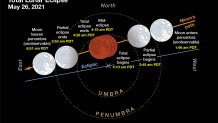
This eclipse isn't for everyone. You have to be west of the Rocky Mountains to view. But our next total lunar eclipse will be visible to the entire United States May 16, 2022.
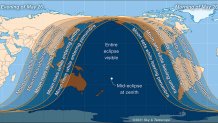
If you get any excellent pictures please share: @anthonynbcla or #NBCLA.
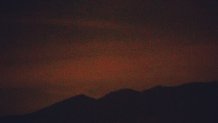
This is a picture I took of the Sept. 27, 2015 Lunar Eclipse. It's a good example how our mobile phones don't capture this event well. Binoculars and telescopes give a beautiful view of eclipses.

